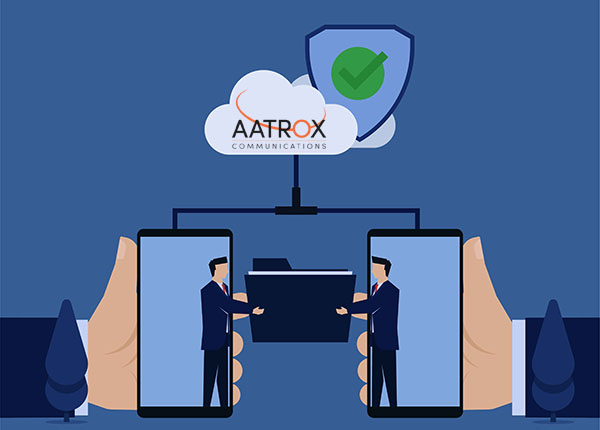Most small business owners and managers are familiar with PBX systems, which have pretty much been the standard for commercial phone systems going all the way back to the 1960s.
Of course, today’s systems have come a long way from the most basic systems that were available way back when.
Early Private Automatic Branch EXchange (PABX) systems didn’t consist of much more than a group of phones and an obscene amount of wire to connect them all. But over the years, more features were added as office systems became more automated.
Modern PBX systems now can seamlessly blend with a company’s computer system to offer everything from customizable hold music to voice prompts to help callers find the right person to help them.
Systems are also scalable, so a small business with five employees will have different telephone needs than an organization with a staff of 100. Systems grew more efficient and more services became available, but often depended on a proportional amount of hardware to work right.
The good news for office automation fans – and businesses eager to be improve their efficiency – is that PBX systems are getting better, and requiring far less hardware – sometimes even none at all.
One solution is what’s called a cloud PBX system.
Here, the business phone system data is hosted off site on a private server or a group of servers. All of the system’s features are available online, which makes it easy to configure, rather than requiring someone to pull wires anytime a changed is needed and hope that everything was done correctly and everyone is properly connected. An off-site server also makes it easy to add or remove lines as needed.
Cloud PBX systems use VoIP, or Voice Over Internet Protocol. This allows phones to communicate over the Internet rather than requiring traditional yet bulky phone system infrastructure. Using a feature called Session Initiation Protocol, or SIP, calls and other data, including multimedia items like text or video info, can be easily routed to specific phones.
Customers wanting to utilize VoIP features for their workplace only need to choose between a variety of hardware options including IP-enabled phones, traditional softphones, or mobile devices. Mobile-to-mobile calls can be easily performed if each party has the correct app and the ability to connect online.
Part of the appeal of a cloud PBX system is that it’s fairly easy for a system administrator to handle even if they don’t have a lot of technical knowledge or abilities. Because the systems are all virtual, this means that administrators only need to use a drag-and-drop menu to arrange everything as they like it, including assigning different phones to different users or locations.
Not sure where to start?
If your company is considering moving your phone systems to a cloud system, consider the following –
- Security.
Learn what steps the host offers to keep your data secure, including voice mails, numbers, login information or other sensitive info. What kind of authentication is offered? - Costs.
How do services to compare to others? Are there different levels based on size? - Changes.
How easy is to add or remove names and numbers or make other modifications? What costs are there for routine changes? - Support.
What kind of help is available? What kind of back-ups are available? What happens during downtime, if there is any? When and how can support be reached?
Overall, companies wanting to look ahead to future phone and data needs for their workplace should consider cloud PBX systems. Along with less physical hardware to manage, they also can save time and effort and deliver a wide variety of features.
We work with award-winning IP PBX 3CX, and always recommend that our partners and end customers. For more information, check out our page on the 3CX phone system, or get in touch with us to find the best solution for your business.

